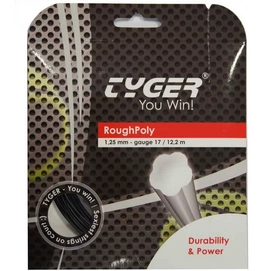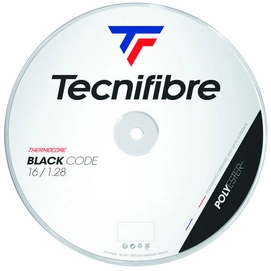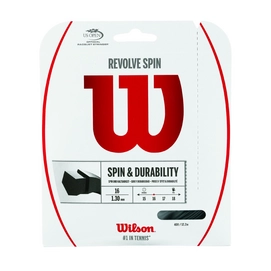Types of Tennis Strings
The most important characteristics
Control
Tennis players who love to maintain control over the ball on the court should look for a string that helps to guide the ball. Even when you put a lot of power into your swing, you want the ball to go where you want it to. To maintain control, it's important that the strings don't shift during play.
Power
This sort of string is perfect for those who want to put that extra bit of power behind each swing. Even when you hit the ball normally with these strings, the ball travels at a faster speed. This has to do with the elasticity of a tennis string; the stiffer the string, normally the more speed can be generated.
Comfort
These strings are ideal for people who are are slightly more prone to tennis related muscle injuries who wish to avoid complaints from sore arms and elbows. When you hit the ball with these strings, you feel less vibrations in your arm and experience a smoother return. If you hit the ball softly, you are still able to hit the ball in your desired location. These strings tend to work best when less tightly strung.
Hybrid
Hybrid tennis strings are becoming more and more popular in the world of tennis. With a hybrid string, you can combine different playing styles with the same set of strings. An example of this is the combination of a very sturdy string and a very sensitive string, which means you can get the best of both power and comfort.
Durable
By playing with more durable tennis strings, you will be able to use the same strings for a longer amount of time without the tension dwindling. For tennis players who like to play very powerful shots will find that a stronger tennis string is more necessary to last a bit longer than, for example, gut strings. Durable strings are made from stronger materials, which makes them thicker, and thus last longer.
Different types of materials
Natural gut
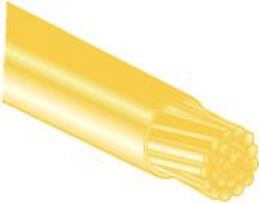
Gut tennis fibres are made of cow (or sheep) gut. They offer the tennis player a superior playing comfort and feeling while also generating a lot of power. Furthermore, this type of string is very elastic, extra resilient and the tension remains stable. This type of string is known to prevent injuries like tennis elbow, since it can absorb the vibrations generated by the impact of the ball because of it's high elasticity. The disadvantage is that it do not have a high lifespan, are pretty weather sensitive and expensive to buy. A number of professional players play with natural gut. If your performance takes priority over money, then purchase natural gut tennis strings!
Polyester
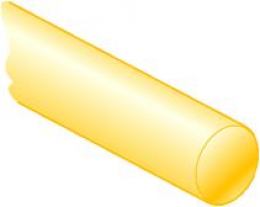
This type of tennis string is fabricated with one single polyester core. It is also referred to as monofilaments and is available in several thicknesses. The most important quality of this string is its excellent lifespan. The disadvantage of monofilaments is that they provide you with less power and feeling than nylon and natural gut and quickly lose their flexibility. With this kind of tennis string, you can hit the ball harder and still keep the ball in the court. The latest generations of polyester tennis strings have improved greatly. Polyesters are designed for players who have a high tennis string consumption. We advise you to lower the required tension by about 10% when using this type of tennis string.
Nylon
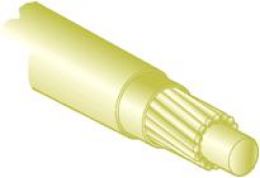
The most commonly used kind of tennis string. It is estimated that more than 70% of the tennis players use a nylon string. They are usually made of a nylon core with multiple long wearing layers. It is safe to say that the more layers, the higher the quality of the tennis string. These layers compensate for the loss of the nylon core's elasticity. Nylon strings usually have a longer lifespan than natural gut, but a shorter one than the polyester or kevlar. They are aimed at players with a normal tennis string usage.
Multifilament
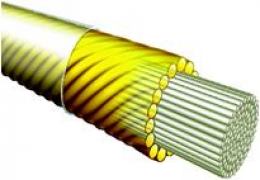
This type comes closest to natural gut strings. Hundreds, often even thousands of fine, individual filaments are braided together to form a tennis string, with a protective coating around it. The advantages of this type of string include high elasticity, major ball acceleration, lots of ball 'feeling' and great playing comfort. The disadvantage include a shorter lifespan. Take into account you can have tension loss straight after the stringing. Also once the protective coating is damaged, the tennis string will shred until it breaks.
Multilayered multifilament

This string is also built up of fine filaments which are braided together. There usually is at least one mantle of thicker filaments around the core filaments, which are braided in the opposite direction. This means the playing abilities are better and the elasticity is higher.
Multifilament with a solid core
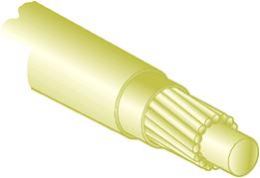
This is the most basic nylon tennis string and it is sometimes called 'synthetic gut'. A solid core is surrounded by a mantle of filaments. Due to the core being large in size, this string has a higher durability than the multifilament cords without a solid core.
Multifilament with solid core and multilayered
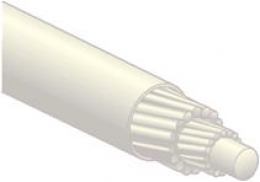
A relatively thin, massive core is surrounded by several mantles of filaments. The design of this string gives it the maximum durability.
Multifilament solid core and structured
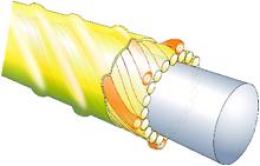
These strings have a solid massive core, surrounded by filaments of varying thickness. The advantage of this string makes the surface structured, which provides more grip and spin on the ball. However, the disadvantage of it means that the string does not last very long as it will become frail which results in a shorter life span.
Kevlar
Kevlar is the most durable tennis string that is available on the tennis string market. We don't recommend that you use this tennis string unless you are a chronic tennis string 'breaker'. Watch out, this type of string is very stiff, plays uncomfortably and generates very little power. It is also very damaging for your arm and wrist. If you do use kevlar, we advise you to lower the tension by 10%
Hybrid
Hybrids are created using 2 categories of strings: one for the width and another for the length of the racket. With most tennis racket stringings, it is usually the string in the length which breaks. This is because they move more than in the width and 'saw' little holes in the length, causing them to break more easily. That's why you should choose very durable ones, (polyester or kevlar), for the length, while for the width natural gut or a multifilament are usually used to be able to put touch into your game and for extra comfort. A hybrid stringing has a reasonably long lifespan. This means you can use numerous combinations.

